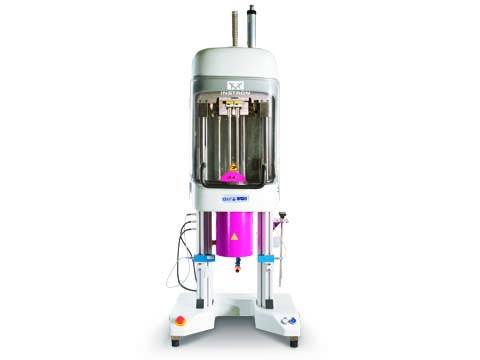ISO 11443 and ASTM D3835 are two analogous standards, laying out procedures to analyze the flow properties of polymer melts up to high shear levels. This is used primarily for process design in injection molding and extrusion, where the process designer needs to know how to best design the mould, set temperatures, adjust speed and pressure based on how the polymer melt will flow. The test is performed by means of a capillary rheometer, imposing a series of pre-determined shear rates on the hot fluid by extruding it through a capillary die. The pressure of the fluid as it hits the die is recorded; the resulting data can then be analyzed in order to determine the flow properties. The testing temperature applied can be altered in order to determine the best processing temperature, but for practicality reasons, care should be taken when applying temperatures much higher or lower than the specified melting point.
In this application, the manufacturer desired a new formulation of Polypropylene (PP) for use in lawn shade applications. The product was being manufactured using a twin-screw extruder with a temperature range of 185 to 210°C; the final product was a thread that consisted of a PVC core with a PP sheath. The PP needed to process just like the PVC, but behave in a more environmentally friendly manner. Once the threads had been made, they would be woven together into textiles. The manufacturer was seeking to optimize the manufacturing process and quality of the product by enabling informed decisions about incoming raw material; in particular if the material should be rejected, modified, accepted or the process adapted to compensate for it. To this end, a rheological analysis tool was required.
We used an Instron SR20 capillary rheometer for rheological characterization of the samples. The configuration we used in this application involved a 140 MPa pressure transducer, 20 kN load cell and the standard 15 mm barrel. The capillary die had a diameter of 1 mm and length of 30 mm. The results of the tests enabled us to compare the samples and could be used to make production decisions.
